
Roots
Consider the resilient strand of textured hair, a living archive carrying stories of resistance, wisdom, and profound connection to the earth. For generations, Black and mixed-race communities have nurtured these strands with inherited botanical practices, a legacy passed down through whispers, hands-on lessons, and a deep reverence for nature’s bounty. Modern hair science, with its microscopes and molecular insights, now offers a compelling validation of these ancestral traditions. It unravels the intricate chemistry behind what our forebears intuitively understood ❉ the potent synergy between botanicals and the unique architecture of textured hair.
This exploration reveals how the very foundations of contemporary hair care echo the ancient wisdom of those who cultivated beauty and wellness from the land itself. It is a journey into the heart of textured hair heritage , where every curl, coil, and wave tells a tale of continuity and knowledge.

Ancestral Structures and Modern Scrutiny
The anatomy of textured hair presents distinct characteristics, setting it apart in its need for specific care. Scientifically, the elliptical cross-section and the irregular distribution of disulfide bonds contribute to its characteristic curl pattern and its propensity for dryness and breakage. Ancestral practitioners intuitively addressed these vulnerabilities. They understood, without the benefit of a microscope, that these strands thirsted for moisture and required gentle handling.
They knew to seal the hair, to protect it from the sun, and to fortify it with elements drawn directly from their environment. This inherent knowledge, honed over centuries, laid the groundwork for many of the principles modern trichology champions for high porosity hair and cuticle health.
The wisdom of ancestral hair care, steeped in botanical traditions, provides a foundational understanding for modern hair science.

Hair Anatomy and Heritage Insight
When examining the hair shaft, modern science points to the cuticle layers, the outer protective shield of each strand. For textured hair, these cuticles often lift, creating pathways for moisture to escape. Botanicals like shea butter (from the Vitellaria paradoxa tree, native to West Africa) have been used for thousands of years as a sealant. Contemporary studies confirm its moisturizing properties, highlighting its high fatty acid content (oleic and stearic acids) that helps retain hydration and reduces dryness.
A study on a cream with 5 percent shea butter showed moisturizing effects lasting up to 8 hours after application. This echoes the consistent historical application of shea butter to lock in moisture, particularly for curly and coarse hair textures, increasing softness. The traditional practice of applying unrefined shea butter directly to hair is thus supported by its molecular composition and its ability to create a protective barrier against moisture loss.
Consider the deep roots of argan oil , pressed from the kernels of the argan tree (Argania spinosa L.), indigenous to Morocco and southwestern Algeria. Berber populations have used argan oil for centuries for skin and hair care. Modern research validates its nourishing properties, attributing them to its rich content of vitamin E and fatty acids (omega 6 and 9).
These components restore the hair’s natural barrier, strengthening it and limiting water loss. The ancestral reliance on these plant oils was a testament to observing nature’s offerings and discerning their benefits for hair.

Traditional Classifications and Scientific Lens
While modern hair classification systems (like curl type charts) offer a systematic way to categorize textured hair, historical societies possessed their own intricate systems. These were often tied to familial lineage, social status, and regional identity, reflecting a classification rooted in community and cultural heritage rather than just curl pattern. Hairstyles themselves, and the care rituals that accompanied them, served as visual markers. For instance, in many African cultures, hair traditionally symbolized family, social status, and tribal affiliations.
The intricate braids and styles communicated a person’s age, marital status, or position within the community. This complex interplay of aesthetics and communication underscored a holistic understanding of hair that extended beyond mere appearance.
The traditional lexicon of textured hair care, passed down through generations, names ingredients and practices that now find scientific equivalents. The term “moisture retention,” for example, was an unspoken goal in ancestral oiling rituals and protective styling. What was known through generations of experience as making hair “soft” or “supple” is now understood on a biochemical level as the successful penetration of emollients and humectants, strengthening the hair shaft and reducing friction. The practices were the lexicon, the results the validation.

Ritual
The very word “ritual” conjures an image of deliberate, perhaps even sacred, action, performed with intent and a connection to something larger than the individual. In the context of textured hair heritage , styling has always been a ritual, a profound act of self-expression, communal bonding, and a quiet assertion of identity. From the meticulous creation of braids that carried hidden messages or seeds during the transatlantic slave trade to the intentional shaping of coils with plant-based emollients, these practices were deeply rooted in a lineage of care and cultural meaning. Modern hair science, rather than dismissing these rituals as mere folklore, illuminates the underlying principles that made them effective, offering a scientific affirmation of ancestral artistry.
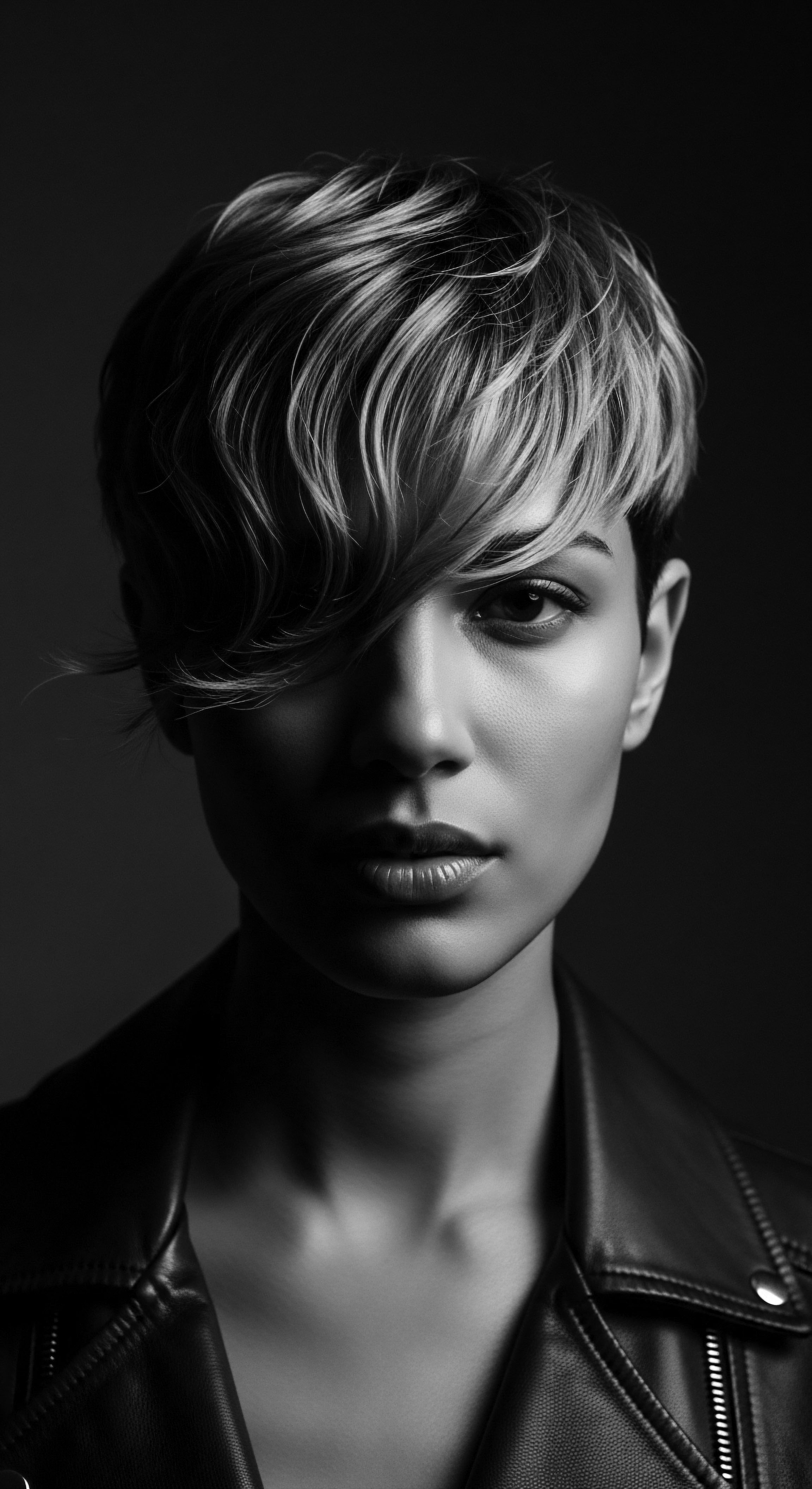
Protective Styling Through Time
Protective styles, a cornerstone of textured hair care today, have an ancient lineage. Styles like cornrows and Bantu knots protected fragile hair ends, minimizing breakage and retaining length long before scientific studies quantified these benefits. These were not simply aesthetic choices; they were strategies for hair health and preservation, born of necessity and ingenuity in diverse climates and challenging historical contexts.
The enduring practice of these styles across the African diaspora, even when head coverings became a means of control during slavery, speaks to their deep cultural significance and resilience. Enslaved women transformed a tool of oppression into a fashion statement, a symbol of dignity.
- Cornrows ❉ Ancient braiding patterns from Africa dating back to 3500 BC, often used to signify social status or tribal affiliation, now recognized for protecting hair from external damage and tension.
- Bantu Knots ❉ Traditional to the Zulu Tribe of South Africa, historically used in coming-of-age rituals and to keep hair neat and moisturized in humid climates, offering breakage protection.
- Hair Wrapping ❉ A widespread practice across African cultures and the diaspora for protecting hair from elements, maintaining styles, and signifying status or spirituality. Modern bonnets and scarves directly descend from these vital traditions.

The Ancient Roots of Styling Innovation
The application of heat, though today associated with modern styling tools, has historical precedents. While the dangers of excessive heat are now well-documented, ancestral methods of achieving certain textures or drying hair often involved careful use of warmth from natural sources or specific manipulation techniques. The advent of the hot comb in the late 19th and early 20th centuries, while a tool of forced assimilation into European beauty standards, also allowed for new forms of hair expression and maintenance within the Black community. Today’s understanding of heat protectants and thermal reconditioning methods can be seen as a scientific refinement of the ancestral goal to protect hair during manipulation, irrespective of the styling end.
Styling textured hair has always served as a canvas for cultural expression, a protective measure, and a narrative of endurance.
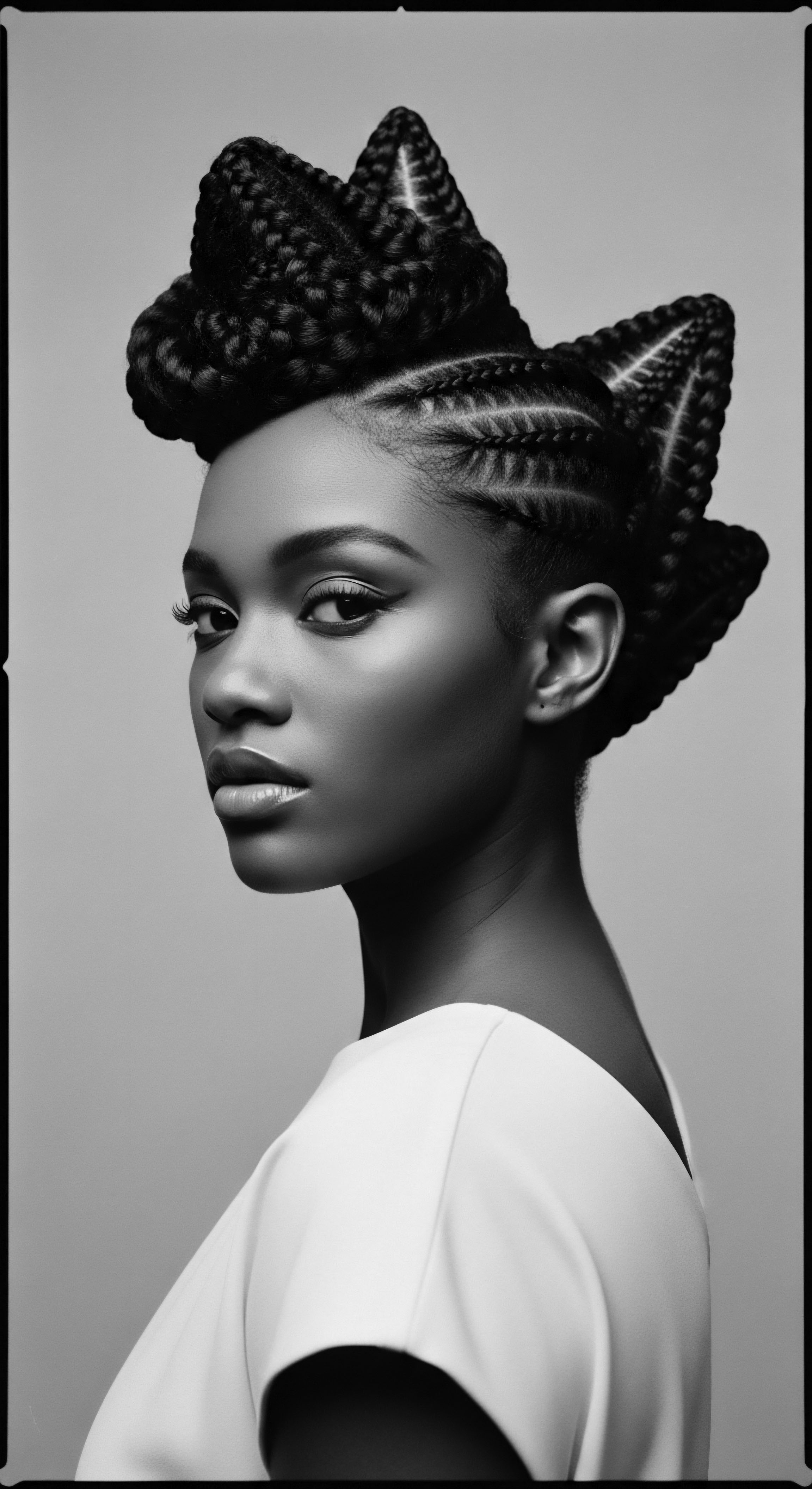
The Efficacy of Traditional Tools and Techniques
The “complete textured hair toolkit” of antiquity, though lacking chrome and electricity, was surprisingly effective. Combs crafted from wood or bone, simple hand techniques for detangling, and the communal practice of hair dressing were all integral. These methods emphasized gentleness, crucial for fragile textured strands.
Modern science confirms that excessive pulling and harsh manipulation can cause mechanical damage. The soft touch, the methodical sectioning, the patient detangling—these inherited techniques align perfectly with contemporary recommendations for minimizing breakage and maintaining cuticle integrity.
Consider the application of oils during styling. While some modern perspectives caution against excessive oil, ancestral practices often involved oiling the hair and scalp as a sealing agent after moisturizing. Scientific research indicates that certain oils, such as coconut oil, can penetrate the hair shaft, reducing protein loss. Others, like grapeseed oil and jojoba oil , serve as effective sealants, sitting on the hair’s surface to lock in moisture.
The layered approach of moisturizing with water-based elements followed by sealing with oils, a core tenet of many contemporary natural hair regimens, echoes the intuitive understanding of ancestral caregivers. This traditional wisdom, often passed down through touch and observation, finds its scientific validation in studies on lipid chemistry and hair penetration.
| Botanical Ingredient Shea Butter (Vitellaria paradoxa) |
| Traditional Use in Heritage Deep conditioning, sealant for moisture, healing properties. Used for thousands of years in West Africa for food, skin balms, and hair. |
| Modern Scientific Validation Rich in fatty acids (oleic, stearic), vitamins A and E. Proven to moisturize, reduce dryness, anti-inflammatory, helps cell regeneration, strengthens hair fibers, reduces frizz. |
| Botanical Ingredient Argan Oil (Argania spinosa) |
| Traditional Use in Heritage Nourishing, antioxidant, hair softening. Used for centuries by Berber populations for skin and hair care. |
| Modern Scientific Validation High in vitamin E, omega 6 and 9 fatty acids. Restores hydrolipidic film, strengthens skin barrier, limits water loss, brings shine and suppleness, anti-hair loss activity observed in studies. |
| Botanical Ingredient Chebe Powder (Croton zambesicus) |
| Traditional Use in Heritage Hair strengthening, length retention by reducing breakage. Used by Chadian women for centuries. |
| Modern Scientific Validation Contains essential fatty acids, proteins, antioxidants. Strengthens hair cuticle, helps prevent breakage, deeply hydrates, improves elasticity, enhances moisture retention, mild antimicrobial and anti-inflammatory properties. |
| Botanical Ingredient Fenugreek (Trigonella foenum-graecum) |
| Traditional Use in Heritage Promoting hair growth, anti-dandruff, strengthening. Used in ancient Chinese and Ayurvedic medicine. |
| Modern Scientific Validation Rich in iron, protein, flavonoids, and saponins. Anti-inflammatory and antifungal effects, helps reduce hair fall, decreases dandruff, supports new hair growth by strengthening follicles. |
| Botanical Ingredient These natural ingredients, long honored in ancestral practices, demonstrably offer tangible benefits for textured hair health and growth, a testament to enduring heritage wisdom. |

Relay
The concept of “relay” in textured hair heritage speaks to the enduring transmission of wisdom across generations, a continuous flow of knowledge from elder to youth, from past to present. Modern hair science steps into this lineage, not to supplant, but to augment and illuminate. It acts as a lens, bringing into sharper focus the mechanisms by which ancestral practices achieved their profound results. This deeper understanding reinforces the authority of inherited wisdom, creating a dialogue between the laboratory and the lived experiences of Black and mixed-race communities.

Holistic Care and Ancestral Well-Being
Traditional hair care was rarely an isolated act. It was deeply woven into a holistic approach to well-being, where hair health reflected inner vitality. Dietary choices, herbal remedies for general health, and even spiritual practices contributed to the overall care regimen. This ancestral understanding aligns with modern science’s increasing recognition of the interplay between nutrition, stress, and hair health.
For instance, the use of fenugreek seeds in hair care, long a remedy for thinning hair and dandruff in Ayurvedic and ancient Chinese medicine, finds support in current studies highlighting its richness in iron, protein, flavonoids, and saponins. These compounds are believed to promote hair growth due to anti-inflammatory and antifungal effects. A study from 2006 on 53 people showed improvements in hair volume and thickness with a daily oral dose of fenugreek seed extract. This illustrates how modern research can pinpoint the active components responsible for the observed benefits from practices passed down through time.

What Does Modern Research Reveal About Ancient Practices?
A significant aspect of traditional care involved the meticulous application of plant-based oils and butters. The scientific community has explored the molecular structure of these natural ingredients, revealing why they are so effective for textured hair, which is often prone to dryness and breakage due to its structural characteristics.
For example, coconut oil , widely used in many ancestral African and diasporic hair care routines, has been shown to prevent protein loss from hair, a common concern for highly porous textured strands. Its small molecular size allows it to penetrate the hair shaft, rather than merely coating it, directly addressing moisture replenishment. This penetration reduces protein loss and strengthens the hair from within. The practice of oiling the scalp, a staple in many traditions, promotes healthy blood circulation, which supports follicular health.
Another ingredient, chebe powder , originating from Chad, is celebrated for its ability to reduce breakage and retain length. Scientific analysis points to its components, including proteins, minerals, and essential fatty acids, that strengthen the hair cuticle and improve elasticity, making strands less prone to snapping. The women of Chad have long used this powder by combining it with oils and applying it to the lengths of their hair, a method that modern science now understands as effective for sealing in moisture and fortifying the hair shaft.
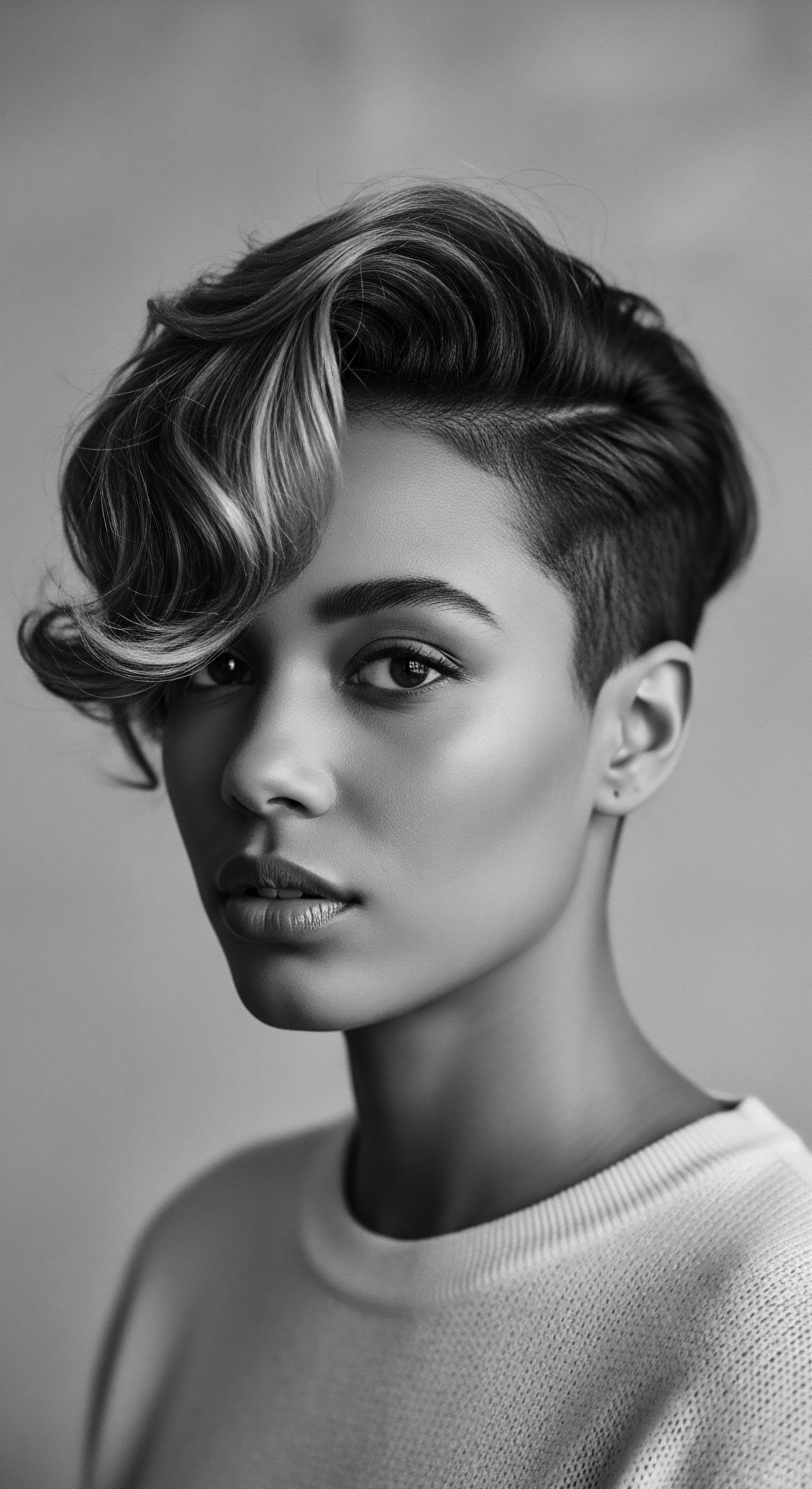
The Nighttime Sanctuary and Bonnet Wisdom
The practice of covering hair at night, particularly with silk or satin bonnets, is an inherited wisdom rooted deeply in African American culture and beyond. This tradition, initially born of necessity during slavery to protect hair from harsh conditions and to assert identity, has become a vital component of textured hair care. Modern hair science provides clarity for this centuries-old practice. Satin and silk fabrics create less friction than cotton pillowcases, preventing tangles, frizz, and moisture loss.
This mechanical protection preserves delicate curl patterns and reduces the likelihood of breakage while sleeping. The science of friction and moisture transfer validates this everyday ritual, proving that the seemingly simple act of donning a bonnet is a sophisticated strategy for hair preservation.
The enduring power of inherited hair care practices stems from their consistent efficacy, now understood through the lens of modern science.
The continuity of such practices, despite historical disruptions and societal pressures to conform to other beauty standards, speaks volumes about their efficacy and cultural significance. The “Black is Beautiful” movement of the 1960s, alongside the contemporary natural hair movement, has re-centered these practices, celebrating all textures and styles as acts of self-acceptance and cultural pride. Modern product development often draws directly from these traditional botanical ingredients, recognizing their proven benefits.
The table below summarizes some key traditional ingredients and their scientific backing for textured hair care.
| Botanical Castor Oil (Ricinus communis) |
| Key Bioactive Compounds Ricinoleic acid |
| Validated Hair Benefits Moisturizing, anti-inflammatory, helps decrease prostaglandin D2 (a negative growth factor). |
| Botanical Rosemary (Rosmarinus officinalis) |
| Key Bioactive Compounds Carnosic acid, rosmarinic acid |
| Validated Hair Benefits Stimulates blood circulation, promotes hair growth, anti-inflammatory, antimicrobial, antioxidant. |
| Botanical Neem (Azadirachta indica) |
| Key Bioactive Compounds Azadirachtin, nimbin |
| Validated Hair Benefits Antibacterial, antifungal, beneficial for scalp health, helps with dandruff. |
| Botanical Aloe Vera (Aloe barbadensis miller) |
| Key Bioactive Compounds Polysaccharides, vitamins, enzymes |
| Validated Hair Benefits Moisture retention, soothing scalp irritation, anti-inflammatory properties, balances moisture. |
| Botanical Many ancestral botanical selections show strong correlation with modern scientific findings for promoting hair health. |
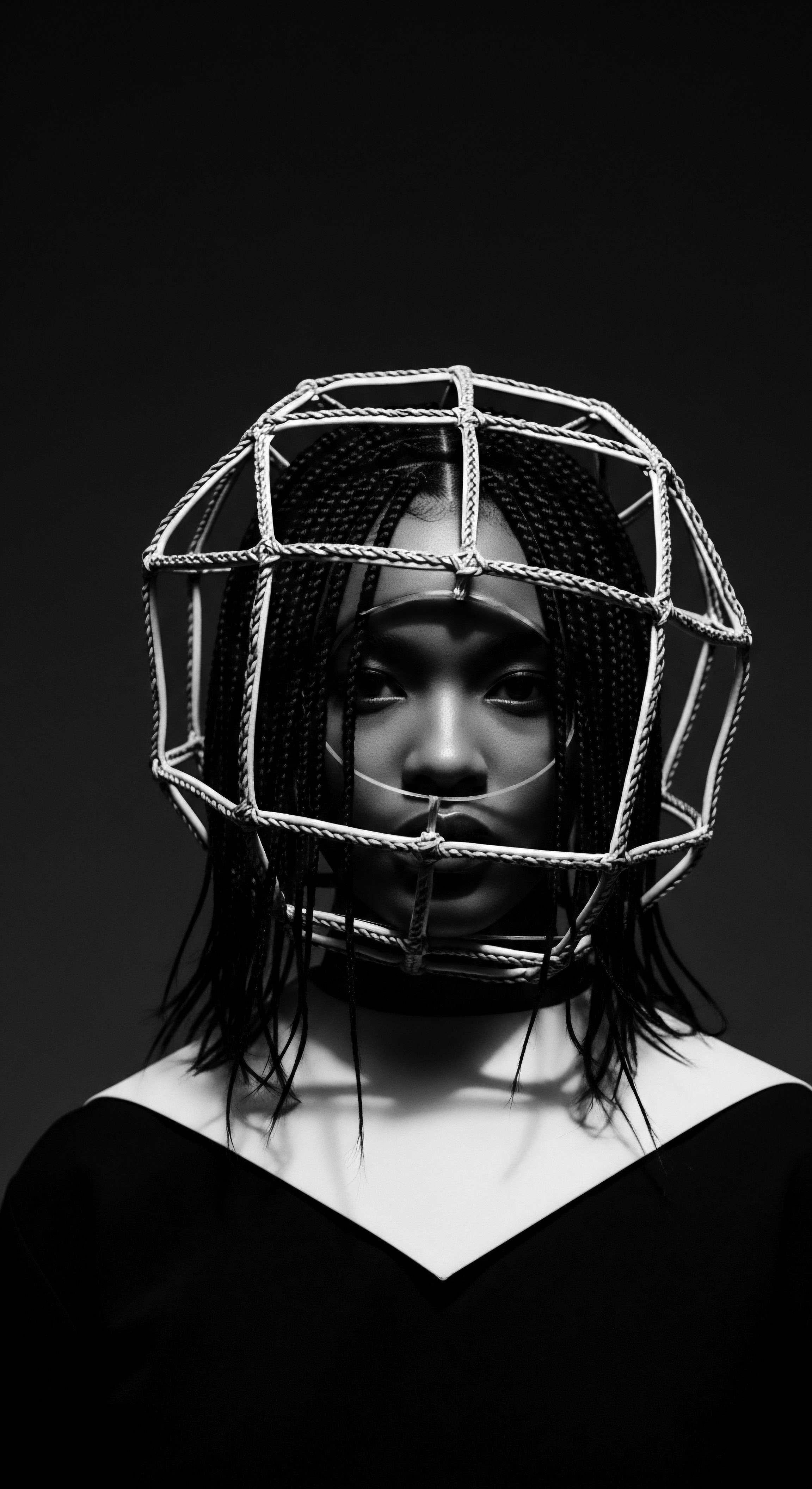
Bridging Generations with Science
The journey to understanding textured hair health is a continuous conversation, a relay race where each generation carries the baton of knowledge. Modern science empowers us to appreciate the depth of ancestral knowledge, providing scientific language for practices that were once simply “how things were done.” This dialogue affirms the wisdom embedded in textured hair heritage , ensuring its continued relevance and celebration.
- Ancestral Recipes ❉ Traditional formulations often combined multiple plant extracts, a synergy now understood through the lens of polypharmacology, where multiple compounds work together for enhanced effects.
- Hair Oiling Routines ❉ The consistent, ritualistic application of oils, understood through science to aid in moisture retention and scalp health, aligning with lipid delivery systems and barrier function.
- Protective Garments ❉ The use of headwraps and bonnets for hair preservation, validated by studies on fabric friction and moisture transfer, reducing mechanical damage.
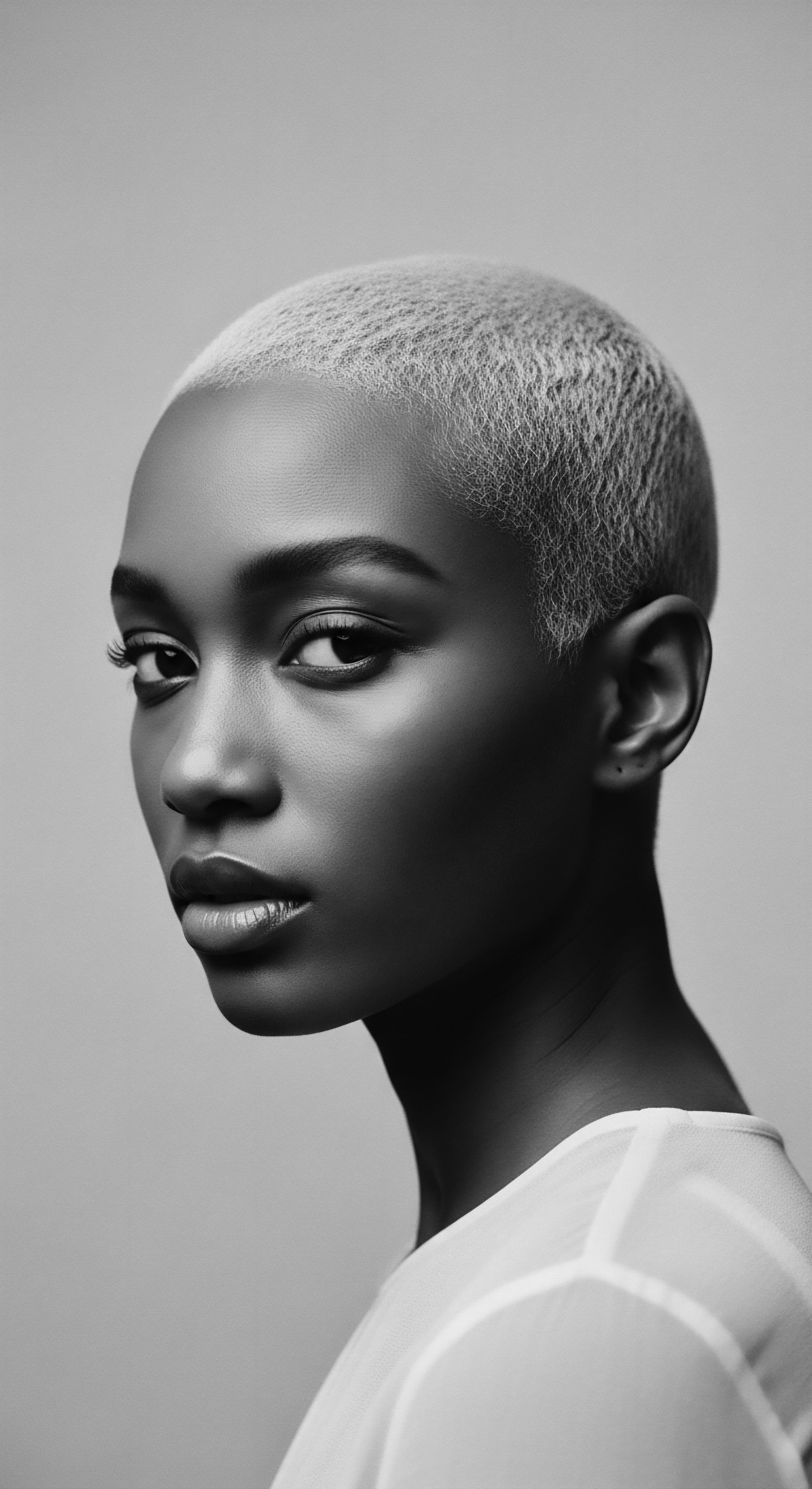
Reflection
As we trace the path from ancient botanical practices to the sophisticated laboratories of modern hair science, a profound truth emerges ❉ the wisdom of our ancestors, particularly concerning textured hair heritage , was not simply anecdotal. It was deeply observational, ecologically attuned, and remarkably effective. The meticulous care passed down through Black and mixed-race families was a profound demonstration of understanding unique hair needs, honed by centuries of lived experience and an intimate connection to the earth’s offerings.
The journey of textured hair—from the intricate adornments that signaled status in ancient African kingdoms to the quiet acts of resistance embedded in protective styles during forced migration, and finally to the contemporary resurgence of natural hair pride—is a testament to resilience and adaptation. Each curl, coil, and kink holds stories of survival, beauty, and unwavering identity. When science validates the moisturizing capacity of shea butter, the strengthening attributes of chebe powder, or the protective qualities of a silk bonnet, it does more than just confirm a chemical reaction.
It affirms a legacy. It acknowledges the ingenuity of those who, without beakers or microscopes, intuitively understood the science of their strands.
Roothea’s “Soul of a Strand” ethos finds its most vibrant expression here ❉ in the recognition that modern understanding deepens our appreciation for an unbroken chain of heritage. Our hair is not just biology; it is a living, breathing archive of ancestral knowledge, a tactile connection to the strength and beauty that endures across generations. We carry this heritage not as a burden, but as a luminous gift, continually discovering its layers, and honoring the deep roots from which our strands arise.

References
- Byrd, A. D. & Tharps, L. (2014). Hair Story ❉ Untangling the Roots of Black Hair in America. St. Martin’s Griffin.
- Banks, I. (2000). Hair ❉ A Cultural History of Hair. Bloomsbury Academic.
- Boucetta, K. Q. et al. (2013). Cosmetic properties of argan oil for the skin and hair ❉ efficacy and safety. European Journal of Lipid Science and Technology, 113, 403-408.
- Guillaume, D. & Charrouf, Z. (2011). Argan oil and other argan products ❉ Use in dermocosmetology. European Journal of Lipid Science and Technology, 113(4), 403-408.
- Jenkins, N. D. (2020). Strands of Identity ❉ The Cultural Influence and Sociopolitical Role of Natural Hair. Ujima Natural Hair and the Black Community Black Paper.
- Ellington, T. (2018). Natural Hair ❉ An Exploration of Historical and Contemporary Significance. Fashion, Style & Popular Culture.
- Sultana, Y. Kohli, K. & Athar, M. (2007). Effect of pre-treatment of almond oil on ultraviolet B-induced cutaneous photoaging in mice. Journal of Cosmetic Dermatology, 6(1), 14-19.
- Rele, V. G. & Mohile, R. B. (2001). Effect of mineral oil, sunflower oil, and coconut oil on prevention of hair damage. Journal of Cosmetic Science, 52(3), 169-173.
- Agero, A. L. & Revale, V. (2017). A study of the efficacy of a 5% shea butter cream in the treatment of atopic dermatitis. Journal of Dermatological Treatment, 28(6), 570-573.
- Wali, J. et al. (2020). Ethnobotany, traditional knowledge, and nutritional value of Argan (Argania spinosa (L.) Skeels) in Western Anti. SciELO.
- Sharma, N. & Sharma, M. (2023). To Study Methi Seeds For Hair Growth Promotion. International Journal of Current Research and Review, 15(12).
- Chowdhury, K. et al. (2008). Studies on the Fatty Acid Composition of Edible Oil. Bangladesh Journal of Scientific and Industrial Research, 42(3), 311–316.
- El Khomsi, M. et al. (2021). Ethnobotanical study of medicinal plants used for medicinal, cosmetic, and food purposes in the region of Moulay Yacoub. Journal of Pharmacognosy and Phytochemistry Research, 10(4), 219-228.
- Ibraheem, O. A. & Agbede, J. O. (2024). Cosmetic Ethnobotany Used by Tribal Women in Epe Communities of Lagos State, Nigeria. Juniper Publishers.
- Adiguzel, A. et al. (2009). The effects of some plant oils and butters on hair. Journal of Cosmetic Dermatology, 8(4), 282-288.
